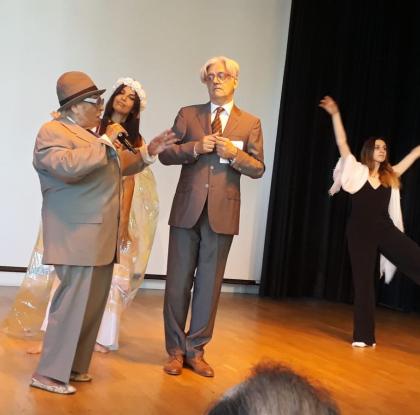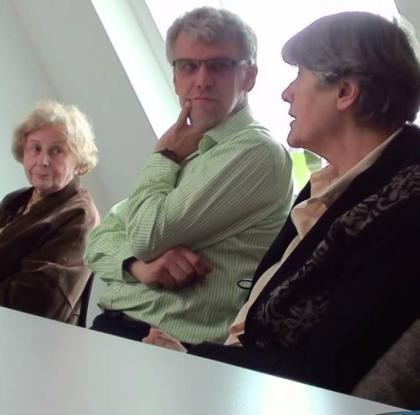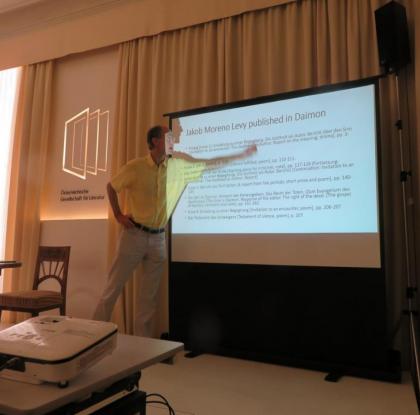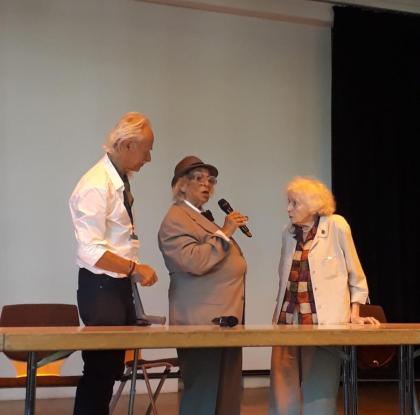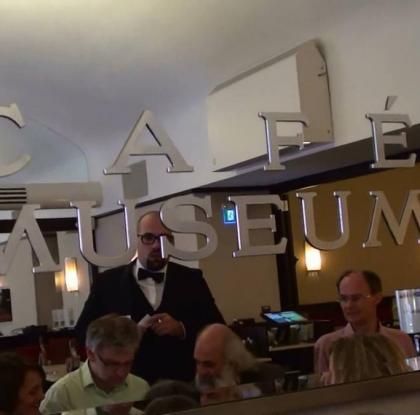Psychodrama is based on life itself. The space a person lives in is reproduced on the stage. If a conversation takes place in the kitchen, we set out the table and chairs and give imaginative space to a window, sink, door, fridge, etc.
Constructing the reality of an individual’s space helps the person to really be there and warms them up to produce the feelings that do or do not exist in that space., When someone remembers a conversation that took place at the table, in childhood, it is important to have the people in the scene played by members of the group. We can often learn more by looking in this way at a person’s living space than we can in months of interview. I once was invited into a created space of a young man’s apartment. He walked in by lifting his feet unusually high as if carefully tiptoeing. I asked why. He said, ‘I throw my old milk cartons on the floor, they are everywhere1. That spoke of isolation, not many visitors, a lack of care for the smell and looks. An important clue to his alienation was his living space. Our task then was to look at why he had no friends and why he became a recluse. His words up until then belied his reality, but showing the “stage” upon which he lived gave us a trust reality.
The phases of psychodrama
Every psychodrama has three phases: Warm-up; Enactment; Sharing.
Warm-up
The warm-up serves to produce an atmosphere of creative possibility. This first phase weaves a basket of safety in which the individual can begin to trust the director, the group and the method. When the room has its arms around you it is possible to be that which you thought you couldn’t, to express that which seemed impossible to express.
There are many ways to warm up a group. Moreno did it by ‘encountering’ everyone and getting people to talk easily to each other. A person who had a theme was accepted by the group as their protagonist. Another way is for the director to select a protagonist; one whom s/he thinks is ready to work. Another alternative is through creative group exercise from which the subject of the session emerges. This is called a protagonist-centered warm-up. In a self-nomination warm up, people can put themselves forward to be the subject. These suggestions are ways of protagonist selection which come from the warm-up whilst the warm-up itself makes it possible for people to feel freer to trust the group, feel the cohesion and safety in the group and to present their problems in an atmosphere of love, caring and creativity.
Enactment
In this part of the drama, the director and protagonist move the work forward from the periphery of the problem to the core. Psychodrama means literally action of the mind, and it brings out the internal drama, so that the drama within becomes the drama outside oneself. The director uses the group members to play auxiliary egos who are significant people represented in the drama. The original psychodrama stage was three tiered, concentric circles. The first level was for the audience, the second for soliloquy and represented the space outside the heat of the drama, and the top level was for the drama to be enacted. The design was for the work to go from the periphery to the core of a problem. Enactment in most psychodramatic sessions takes place in a designated stage area. During the drama other group members do not sit in that space unless they are playing a role. The stage feels like a ritualized-space once the drama begins. That is to say, the event that is meant to take place in that space takes place only there. Psychodrama which is attempted within the group space with no designated stage area often falls flat because there arc no boundaries spatially or methodologically.
Sharing
As described in the Director section, sharing is a time for group catharsis and integration. It was meant as a “love-back” rather than a feedback, discouraging analysis of the event and encouraging identifications. Points of most involvement by individual group members are identified, and each member finds out how he or she is like the protagonist. Often, as in Greek drama, the audience member is purged by watching the enactment of another’s life story. The sharing is meant to capture this learning process and allow the group members to purge themselves of emotions or insights gained. It is also aimed at normalizing the protagonist’s experience by hearing how others arc similarly involved at different levels of the same process. Sometimes the effectiveness of the overall session can be measured by the depth of the sharing session. A further function of the sharing is a cool-down, a way of re-entering our individual realities after the group enactment.
Power and cautions
There are many cautions regarding the use of psychodrama and many of the individual techniques.
Some techniques may be too powerful for a particular individual, some may be too esoteric and some too frightening.
It is important to be aware of the ease with which an individual may be opened up using these techniques.
In order to accomplish what is necessary for the protagonist and still keep him/her intact, we must use care and discretion (Goldman and Morrison, 1984).
















